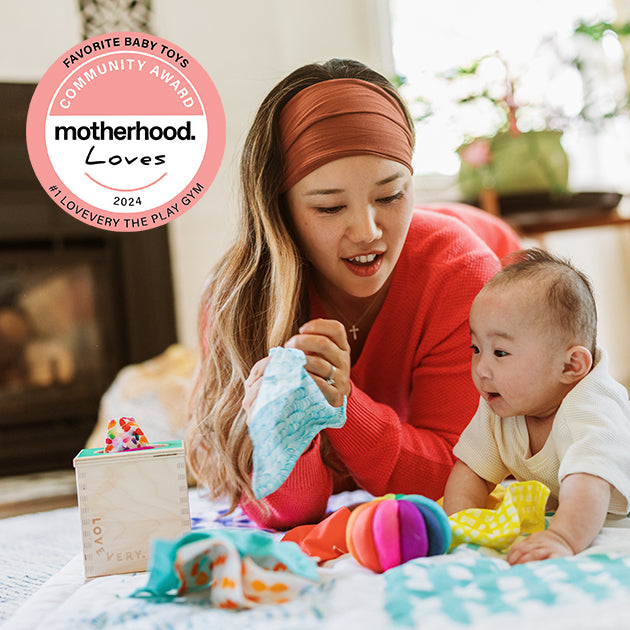You're probably noticing by now that as your precious little one grows, so does your belly. That's where a belly band — a lifesaver for many pregnant women — comes into play. It helps support your baby bump and growing belly, making your pregnancy journey more comfortable and enjoyable.
What Is a Belly Belt?
A belly belt, also known as a maternity support belt, belly support band, or pregnancy support band, is a special accessory designed specifically for expectant mothers. Imagine a sports bra for your belly.
Crafted from stretchy, breathable fabric, this garment wraps around your belly and secures with velcro, providing adjustable comfort and support as your baby bump blossoms. The goal is to give a little lift to your belly, relieving some of the weight and pressure off your back and hips.
This essential accessory can not only make pregnancy more comfortable, but it also helps ensure that daily activities continue to be achievable even as your body changes.
How Does a Belly Belt Work?
A belly belt works by redistributing the weight of your growing baby across your abdomen and back. This gentle redistribution helps to ease the strain on your lower back, abdominal muscles, and pelvic floor. Think of it as a helpful friend providing a little lift when you need it most.
One of the major benefits of wearing a belly belt is its potential to soothe various types of pregnancy-related discomfort. For instance, back pain, a common complaint among pregnant women, can be alleviated as the belt helps support your lower back.
Belly belts can also help with pelvic girdle pain and round ligament pain, providing support and stability to the pelvic area. Moreover, they can help ease joint pain associated with carrying the extra weight of a growing baby and even help ease the belly weight. So, while they may look like simple bands of fabric, belly bands are actually well-designed tools that can significantly support your comfort during pregnancy.
When Should You Consider Using a Belly Belt?
A belly belt can be used at various stages of pregnancy, but many women find them especially helpful during the second and third trimesters when the baby bump becomes more pronounced. That being said, it's essential to listen to your body and use the belt when you feel the need for extra support.
Some moms-to-be start using it as early as the first trimester, while others don't feel the need until later on. Always consult with your healthcare professional or OB/GYN for personalized advice.
Can Belly Belts Support Postpartum Recovery?
While belly belts are incredibly useful during pregnancy, their role doesn't end there. They can also help with postpartum recovery. Specifically, a postpartum belly wrap can provide gentle compression to the abdominal area, supporting your muscles as they heal and regain strength after childbirth, particularly following a c-section.
They can also help support the recovery of your core muscles after pregnancy. However, it's crucial to remember that while a belly belt can provide support, it should be used in conjunction with proper exercise and physical therapy for the best results.
How To Choose the Right Belly Belt
Choosing the right belly belt involves considering a few key factors.
Comfort
Firstly, comfort is crucial. The belt should be made from soft, stretchy, breathable fabric to keep you comfortable throughout the day. It should also be adjustable to accommodate your growing belly and fit snugly without causing any discomfort.
Support
You should also consider the support level offered. Some belts are designed to offer light support suitable for mild discomfort, while others provide extra support for severe back pain or pelvic girdle pain. Consider your needs and choose a maternity belly band that offers the right level of support for you.
Affordability
Finally, it's also worth noting that belly belts come in a range of prices. You can find affordable options or invest in a premium maternity support belt from yours truly.
Offering affordable relief from pregnancy discomforts, our Ultimate Maternity Belt lifts your baby bump, reducing pressure on your hips and lower back. The adjustableVelcro allows it to grow with you, providing continuous support throughout your pregnancy. Made from elastic material, it ensures a comfortable fit without compromising functionality.
It can be a cost-effective way to ease lower back pain and ligament discomfort and a worthwhile investment in your prenatal and postpartum health.
How To Wear a Belly Belt
Learning how to wear a pregnancy support belt correctly can make a significant difference in your comfort level because of the abdominal support it provides. Here's a quick guide:
- Position the belt: The belly belt should sit under your baby bump, not over it. The exact position can vary depending on the belt style and what's comfortable for you. However, it should be low enough to support your lower back and pelvic area.
- Secure the belt: Once positioned, secure the belt using the fasteners. Many belly belts use Velcro for easy adjustment. Remember, it should feel snug but not tight.
- Adjust as necessary: As your belly grows, you will need to adjust the belly belt to ensure it continues to provide the back support you need without feeling too tight.
Note: Wearing a belly belt shouldn't cause discomfort. If it does, it could be a sign that it's not fitted correctly or it's not the right size for you.
Wrapping Things Up
The journey to motherhood is one of excitement and challenges. As you cherish the joy and anticipation, it's important to also care for your changing body. A pregnancy belly band can be your trusty companion during this incredible voyage, alleviating discomfort and providing support for your growing baby bump.
At Motherhood, we understand the importance of comfort during pregnancy — that’s why our Ultimate Maternity Belt is designed to help support your belly during pregnancy and beyond. Adjustable and made from an elastic material, it grows with your bump, ensuring your pregnancy and postpartum journeys are as comfortable as possible.
Sources:
6 Benefits of Belly Bands in Pregnancy | Sustainable Food Trade
Back Pain in Pregnancy | Johns Hopkins Medicine
Round Ligament Pain: What Does It Feel Like, Causes & Treatment | Cleveland Clinic
First Trimester Of Pregnancy: What To Expect | Cleveland Clinic
Recovering From Delivery - Postpartum Recovery | familydoctor





